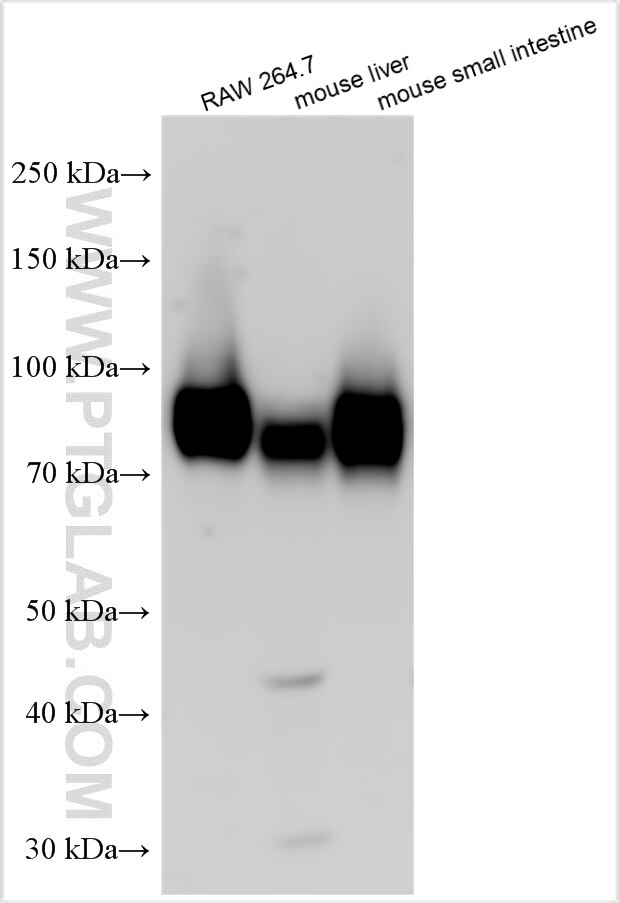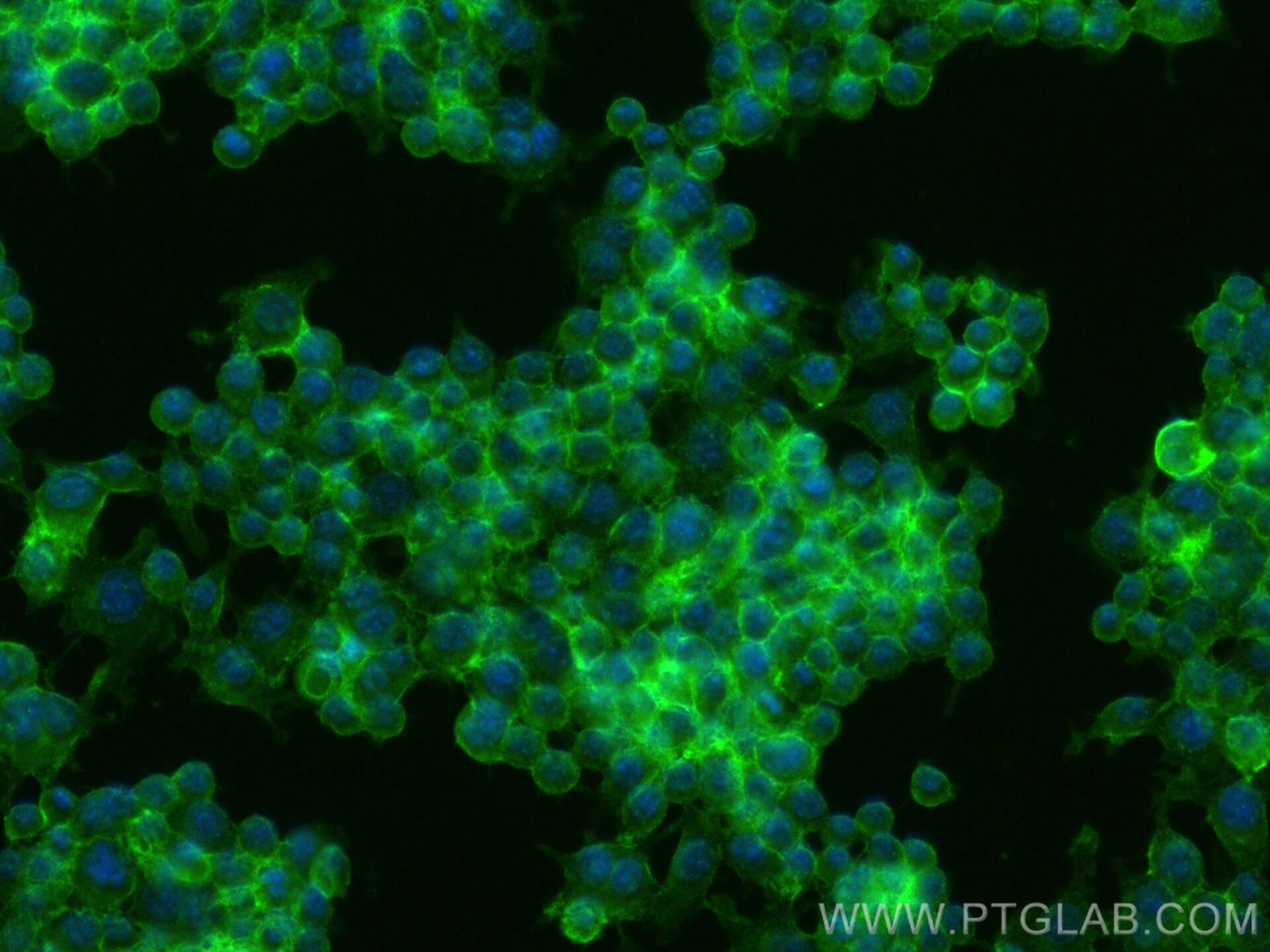CD155/PVR Polyclonal antibody
CD155/PVR Polyclonal Antibody for WB, IF/ICC, ELISA
Host / Isotype
Rabbit / IgG
Reactivity
mouse
Applications
WB, IF/ICC, ELISA
Conjugate
Unconjugated
Cat no : 31447-1-AP
Synonyms
Validation Data Gallery
Tested Applications
| Positive WB detected in | RAW 264.7 cells, mouse liver tissue, mouse small intestine tissue |
| Positive IF/ICC detected in | RAW 264.7 cells |
Recommended dilution
| Application | Dilution |
|---|---|
| Western Blot (WB) | WB : 1:500-1:3000 |
| Immunofluorescence (IF)/ICC | IF/ICC : 1:200-1:800 |
| It is recommended that this reagent should be titrated in each testing system to obtain optimal results. | |
| Sample-dependent, Check data in validation data gallery. | |
Product Information
31447-1-AP targets CD155/PVR in WB, IF/ICC, ELISA applications and shows reactivity with mouse samples.
| Tested Reactivity | mouse |
| Host / Isotype | Rabbit / IgG |
| Class | Polyclonal |
| Type | Antibody |
| Immunogen | Recombinant protein 相同性解析による交差性が予測される生物種 |
| Full Name | poliovirus receptor |
| Calculated molecular weight | 45 kDa |
| Observed molecular weight | 75-85 kDa |
| GenBank accession number | NM_027514.2 |
| Gene symbol | CD155/PVR |
| Gene ID (NCBI) | 52118 |
| RRID | AB_3669988 |
| Conjugate | Unconjugated |
| Form | Liquid |
| Purification Method | Antigen affinity Purification |
| Storage Buffer | PBS with 0.02% sodium azide and 50% glycerol pH 7.3. |
| Storage Conditions | Store at -20°C. Stable for one year after shipment. Aliquoting is unnecessary for -20oC storage. |
Background Information
CD155, also known as PVR, is a type I transmembrane glycoprotein in the immunoglobulin superfamily. It contains three extracellular immunoglobulin-like domains, D1-D3, of which D1 is recognized by the virus. CD155 is thought to play a role in adhesion by interaction with the ECM component vitronectin as well as a role in NK killing of tumor cells. CD155 binds to two receptors of NK cells, CD96 and CD226, and accumulates at cell-cell contact sites, leading to the formation of mature immune synapses between NK cells and target cells.
Protocols
| Product Specific Protocols | |
|---|---|
| WB protocol for CD155/PVR antibody 31447-1-AP | Download protocol |
| IF protocol for CD155/PVR antibody 31447-1-AP | Download protocol |
| Standard Protocols | |
|---|---|
| Click here to view our Standard Protocols |



